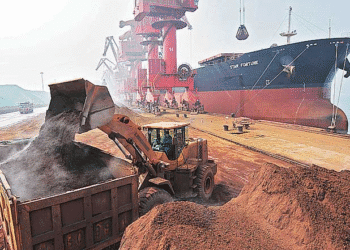DBT Bureau
Bhubaneswar, 11 August 2024
What is Full-Stack Development?
Full stack development involves creating both the frontend and backend of an application. The frontend is the part of the application that users interact with directly; it includes the user interface and any code that manages user interactions. The backend, on the other hand, handles the server-side operations such as data management, business logic, and integration with other systems. Essentially, while the frontend is responsible for how the application looks and feels, the backend ensures that everything functions correctly behind the scenes.
Software developers require slightly different skills, tools, and software knowledge for frontend and backend development. However, full-stack development combines both disciplines—meaning teams can build applications from start to finish in an integrated and cohesive manner. A full-stack application is a software application that encompasses both frontend and backend in a single code base.
What are the benefits of full-stack development?
Organizations adopting full-stack development strategies experience the following benefits.
Effective use of resources
Traditional setups require separate developers for frontend, backend, database management, and sometimes even for server operations. Full-stack developers are adept at handling multiple aspects of a project, from user interface design to server-side scripting and database management. This significantly reduces the number of specialized roles that an organization needs to fill, making project management simpler and more streamlined. A full-stack developer can communicate with both frontend and backend web development teams to organize and manage client software development. Fewer developers often translates to easier coordination among team members, simplified management structures, and a unified project vision.
Agility and speed
Full-stack developers can rapidly create minimum viable products (MVPs) due to their proficiency in managing all layers of application development. This capability is especially advantageous in agile or lean development environments, where swift iteration is crucial. By making changes to both the frontend and backend concurrently, full-stack developers significantly shorten the time to market. This efficiency enables organizations to quickly respond to market demands and seize business opportunities before their competitors.
Enhanced problem-solving
The ability to identify problems across a project is enhanced when you have full-stack developers on board. Their comprehensive understanding of the system architecture and multiple coding languages enables them to identify bottlenecks, conflicts, or inefficiencies that specialized developers might miss. They can also switch easily between frontend and backend development, providing flexibility in resource allocation—this is particularly useful during emergencies.
The technologies used in full-stack development can vary based on the specific focus area. Here’s an overview of the different technologies for frontend and backend development.
Frontend technology
Frontend technology (or client software) focuses on the client-facing side of development. You code any parts of the graphical user interface (GUI) or the features that users interact with using frontend technology.
The most common frontend languages are:
Frontend Technologies:
HTML (HyperText Markup Language): The standard language for creating and structuring content on the web.
CSS (Cascading Style Sheets): Used for designing and layout, including colors, fonts, and spacing.
JavaScript: A scripting language that enables interactive elements on web pages.
Frameworks and Libraries:
React: A JavaScript library for building user interfaces, particularly single-page applications.
Angular: A framework developed by Google for building dynamic web applications.
Vue.js: A progressive framework for building user interfaces and single-page applications.
Responsive Design Tools:
Bootstrap: A popular CSS framework for developing responsive and mobile-first websites.
Tailwind CSS: A utility-first CSS framework for custom designs.
Build Tools:
Webpack: A module bundler for JavaScript applications.
Babel: A JavaScript compiler that helps in writing next-generation JavaScript.
Backend Technologies:
Programming Languages:
Node.js: A JavaScript runtime built on Chrome’s V8 engine, often used for server-side applications.
Python: Known for frameworks like Django and Flask.
Java: Used with frameworks such as Spring Boot.
Ruby: Often used with the Ruby on Rails framework.
PHP: A server-side scripting language commonly used with frameworks like Laravel.
Databases:
SQL Databases: Such as MySQL, PostgreSQL, and Microsoft SQL Server.
NoSQL Databases: Such as MongoDB, Cassandra, and Redis.
Server and Hosting:
Express.js: A web application framework for Node.js.
Apache: A widely-used web server software.
Nginx: A high-performance web server and reverse proxy.
APIs and Web Services:
REST: A popular architectural style for creating web services.
GraphQL: A query language for APIs and a runtime for executing those queries.
Version Control and Collaboration Tools:
Git: A version control system for tracking changes in source code.
GitHub/GitLab/Bitbucket: Platforms for hosting and managing Git repositories.
Containerization and Orchestration:
Docker: For creating, deploying, and running applications in containers.
Kubernetes: For automating the deployment, scaling, and management of containerized applications.
Full-Stack Frameworks:
MEAN Stack: MongoDB, Express.js, Angular, and Node.js.
MERN Stack: MongoDB, Express.js, React, and Node.js.
LAMP Stack: Linux, Apache, MySQL, and PHP.
LEMP Stack: Linux, Nginx (pronounced “Engine-X”), MySQL/MariaDB, and PHP/Python.
These technologies collectively enable full-stack developers to build complete applications, covering everything from the user interface to server-side logic and database management.
Salary of Full-stack developers in India
As of 2024, the salary of full-stack developers in India can vary widely based on experience, location, and company size. Here’s a general breakdown:
Entry-Level (0-2 years of experience): Rs 4,00,000 to Rs 8,00,000 per annum
Mid-Level (2-5 years of experience): Rs 8,00,000 to Rs 15,00,000 per annum
Senior-Level (5+ years of experience): Rs 15,00,000 to Rs 30,00,000 per annum
In major tech hubs like Bangalore, Hyderabad, and Pune, salaries can be on the higher end of these ranges or even exceed them, especially for roles in leading tech companies or startups





















